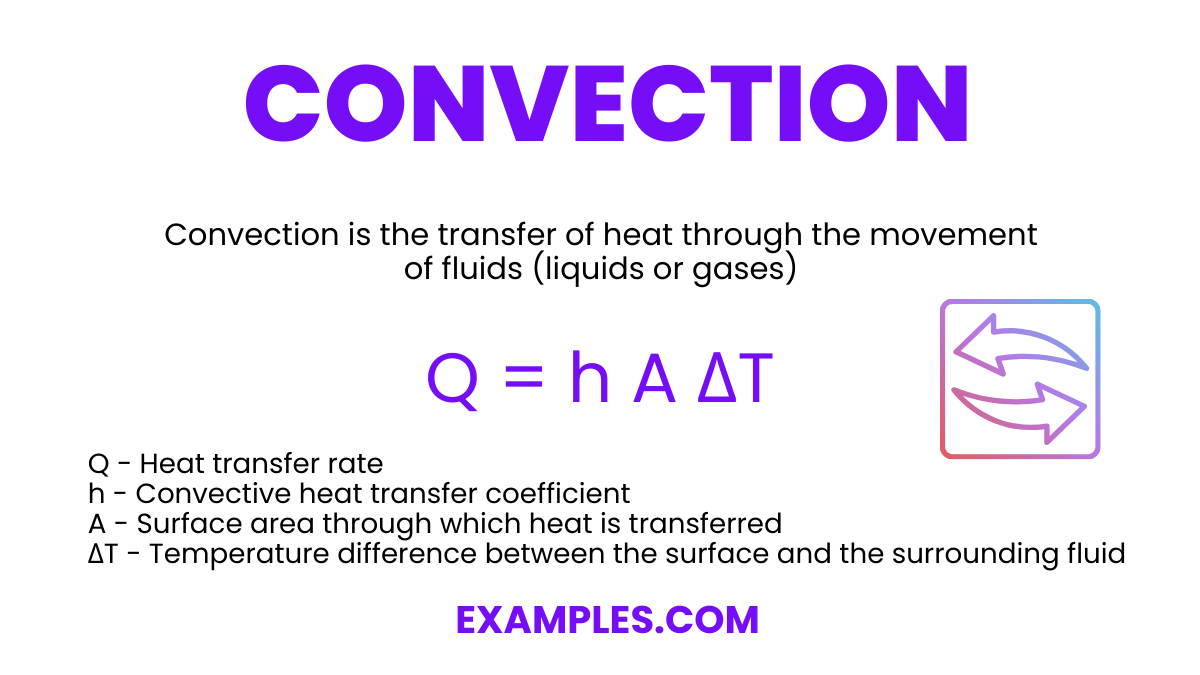Which of the following best describes convection?
The transfer of heat through direct contact
The transfer of heat through electromagnetic waves
The transfer of heat through the movement of fluids
The transfer of heat through solid materials

Convection, a key mechanism in heat transfer, plays a crucial role in various natural and human-made processes. This guide provides a comprehensive overview of convection, explaining its principles in an accessible way. It includes practical examples that demonstrate convection in action, making it a valuable resource for educators looking to bring clarity and context to this essential scientific concept. Engaging and informative, this guide is perfect for enhancing students’ understanding of thermal dynamics.
Convection is the transfer of heat through the movement of fluids (liquids or gases). It occurs when heated particles in a fluid become less dense and rise, while cooler, denser particles sink, creating a circular flow. This method of heat transfer is fundamental in understanding various natural phenomena and technological applications. It’s a key concept in physics, meteorology, and engineering.
A classic example of convection is the heating of water in a pot on a stove. As water at the bottom of the pot gets heated, it becomes less dense and rises to the surface. Cooler water then sinks to the bottom, creating a circular motion known as a convection current. This continuous movement efficiently transfers heat throughout the water, eventually leading to boiling.
The formula for convective heat transfer can be expressed as follows:
Q = h A ΔT
Where:
Q – Heat transfer rate (in watts)
h – Convective heat transfer coefficient (in watts per square meter per degree Celsius, W/(m²·°C))
A – Surface area through which heat is transferred (in square meters, m²)
ΔT – Temperature difference between the surface and the surrounding fluid (in degrees Celsius, °C)
Convection, a fundamental heat transfer process, is evident in numerous natural phenomena and human-made systems. This compilation of 22 distinct examples of convection provides an insightful look into how this principle operates in diverse settings. From everyday household activities to large-scale environmental patterns, each example is a clear illustration of convection in action. This guide is an invaluable tool for educators, helping to explain and visualize the concept of convection in a practical, relatable manner.
Convection is not just a scientific concept; it’s a part of our everyday experiences. This section provides five unique examples of convection in daily life, highlighting its practical implications. Each example underscores how convection influences common activities, making it easier for educators to relate this fundamental heat transfer process to students’ real-world observations.
Convection plays a vital role in many real-life scenarios, often unnoticed. This section offers five distinct examples, each illustrating convection’s role in practical, everyday situations. These examples are especially useful for teachers, providing tangible instances to explain convection’s relevance and impact in everyday settings.
Convection in the atmosphere is a fundamental process affecting weather and climate. This section explores five specific examples, each demonstrating how convection shapes atmospheric phenomena. These instances provide educators with clear, real-world illustrations of convection’s role in the atmosphere, aiding in teaching complex meteorological concepts.
Convection, a key mechanism in heat transfer, occurs in two primary forms: Natural (or Free) Convection and Forced Convection. Natural Convection arises due to temperature differences causing fluid motion without external forces. In contrast, Forced Convection involves fluid movement by external means, such as fans or pumps. Understanding these types is essential in fields like engineering, meteorology, and environmental studies, where convection plays a crucial role in processes and system designs.
Convection as a method for heat transfer is integral in numerous applications, both in nature and human-made systems. It efficiently moves heat by the mass motion of molecules within fluids (gas or liquid), making it essential in heating, cooling, and even weather phenomena. These examples demonstrate convection’s role in transferring heat, providing practical insights into its importance in everyday technology and natural processes.
Convection plays a pivotal role in shaping natural phenomena and influencing our daily lives, from weather patterns to home heating systems. Its understanding is crucial in fields like meteorology, engineering, and environmental science. Recognizing convection’s mechanisms and examples aids in appreciating its importance in the natural world and in human-made technologies, underscoring its significance in both educational and practical contexts.
Text prompt
Add Tone
Types of Convection
Convection Examples In Real Life
Which of the following best describes convection?
The transfer of heat through direct contact
The transfer of heat through electromagnetic waves
The transfer of heat through the movement of fluids
The transfer of heat through solid materials
Which of the following is an example of natural convection?
A microwave heating food
Water boiling in a pot
A radiator warming a room
A fan circulating air
Which process primarily causes ocean currents?
Conduction
Convection
Radiation
Refraction
In which layer of the Earth's atmosphere does convection most commonly occur?
Troposphere
Stratosphere
Mesosphere
Thermosphere
Which of the following best explains the phenomenon of sea breezes?
Conduction
Convection
Radiation
Reflection
What type of convection is involved when warm air rises and cool air sinks in a room with a heater?
Forced convection
Natural convection
Both A and B
None of the above
Which of the following devices uses forced convection to transfer heat?
Radiator
Ceiling fan
Refrigerator
Electric stove
Which of the following is NOT a factor that affects the rate of convection?
Fluid viscosity
Temperature gradient
Surface area
Color of the fluid
What happens to the density of a fluid as it heats up and expands?
It increases
It decreases
It remains the same
It fluctuates
Which type of convection occurs when air is blown over a hot surface by a fan?
Natural convection
Forced convection
Free convection
Induced convection
Before you leave, take our quick quiz to enhance your learning!

